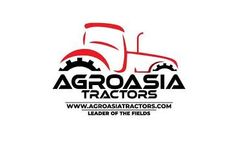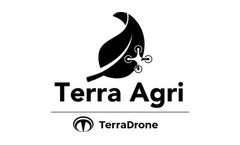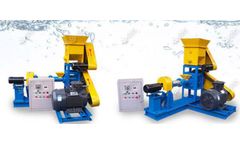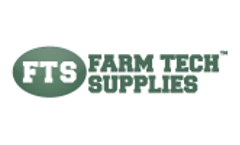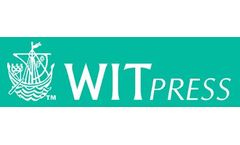Farming Model Articles & Analysis
19 articles found
Water is present in everything we eat. It often goes unseen, yet it is essential for growing, processing, transporting, and preparing every ingredient that reaches our tables. From a cup of coffee to a fresh salad or a plate of rice, water is at the heart of global gastronomy. Today, in an increasingly interconnected world, this relationship between water and food takes on new dimensions, ...
The evolution of tractors has been a cornerstone in the advancement of agriculture, transforming farming from labor-intensive practices to highly mechanized operations. ...
This agricultural system is a straightforward farm model that is extensive and does not maximize inputs such as technology, chemical fertilizers, and pesticides. As the pressures of globalization and modernization intensify over time, traditional farming practices and knowledge are becoming obsolete. As the environment destabilizes each year, ...
Biofloc fish farming, is a biofloc technology for fish farming. Fish feed extruder is the indispensable equipment to make fish feed pellets, Zhengzhou Fusmar Machinery is a professional fish feed machine manufacturer. ...
It’s a project we’re undertaking here at Farm Tech to restore it to its former glory and get this old workhorse running again. ...
The video above, produced by the World Bank, begins by showing how John and Mary Obuom have transformed their one-acre farm into a model of sustainable practices. The family plants a diversity of crops in case one or more fails in a given year. ...
ByEnsia
We assessed the roles of automated environmental monitoring technology in the sustainable use of agricultural ecosystem services in the Karjaanjoki River catchment area in Finland by examining the mental models of 39 farmers participating in an environmental monitoring platform. The monitoring data served the farmers in their decision–making and risk management, in addition to holding a potential ...
However, when we considered changes in farm machinery and input uses as a result of the conversion, we found an overall reduction in GHG emissions. Overall, the GHG modelling indicated that higher total quantities of GHGs were emitted from the furrow irrigation (4,453 kg CO2e/ha) than from the sprinkler irrigation (3,347 kg CO2e/ha) farming ...
The aim of this paper is to examine the factors that determine farmers’ participation in AES using a probit model. The results highlight that younger and well-educated farmers are more likely to enrol in AES; while on the other hand, pluriactive farmers and farmers having identified a successor are less likely to participate. The propensity of farmers’ participation decreases ...
We search for evaluating GhG emissions at the farm level and designing mitigation options. As emissions occur at many stages within the farm operation, it is crucial to consider nutrient cycling and farm working. Our proposal comprises three characteristics: an integrated farm approach which combines empirical and mechanistic ...
The paper proposes to contribute to the growing literature on the practise and significance of multifunctional agriculture, drawing on an empirical study of 50 farms located in Central Italy and Sicily. The paper intends, in particular, to identify and analyse the ways that multifunctionality can be translated into rural development models, and to distinguish the ...
This paper presents a mathematical programming model for farm planning in agricultural areas that are sensitive to nitrates. A bilevel linear programming (BLP) model is developed, that can achieve the optimal farm production plan assuming two conflicting goals: the maximisation of farm gross margin and the ...
This book looks at Sustainable Irrigation in a holistic way, considering the multidisciplinary objectives of sustainable agriculture, sustainable water management, sustainable water infrastructure, sustainable irrigation communities and a sustainable environment, the need to reallocate water between competing users, and the need for water and food security in an environment of scarcity. It does ...
Potential options for mitigating phosphorus (P) transfer from agriculture to water in England and Wales (E&W) were collated across a range of farm systems to assess their potential effectiveness in reducing mass of P transferred and potential cost (pounds sterling [£]) to the farming industry. A simple model framework (called PEASE) ...
Using statistical matching techniques, economists can now create attribute rich datasets by matching across the common variables in two or more datasets. The farm level spatial microsimulation model developed in this paper uses one of many combinational optimisation techniques – simulated annealing – to match the Irish Census of Agriculture to the 2005 Irish ...
Multifunctionality of Agriculture (MFA) is a concept that supports the recognition of complex interdependencies between different resources, production processes and outputs of agricultural land use. Political decision making within a sustainable development frame requires extensive information about these interrelationships in order to analyse the impact of implemented policies and to assess ...
Although most pasture growth models simulate many above- and belowground components of the plant community, calibration and validation are usually based only on periodic measurements of aboveground forage yield. This research used daily measurements of gross primary productivity (GPP) to validate the photosynthesis subroutine of the Integrated Farm System ...
Using a survey organised amongst all horticultural holdings in an important greenhouse production area, a study has been conducted of the attitude of farmers towards the establishment of greenhouse concentration parks. A probit model is used to connect the attitude of farmers with characteristics of horticultural farms and farmers. ...
Using the emerging policy objectives for animal waste in the European Union and the USA as a backdrop, this paper discusses the impact of environmental regulation on farm profits. A theoretical model of the farm is presented where pollution is a joint output of production and where inefficiency in production prevails. ...


